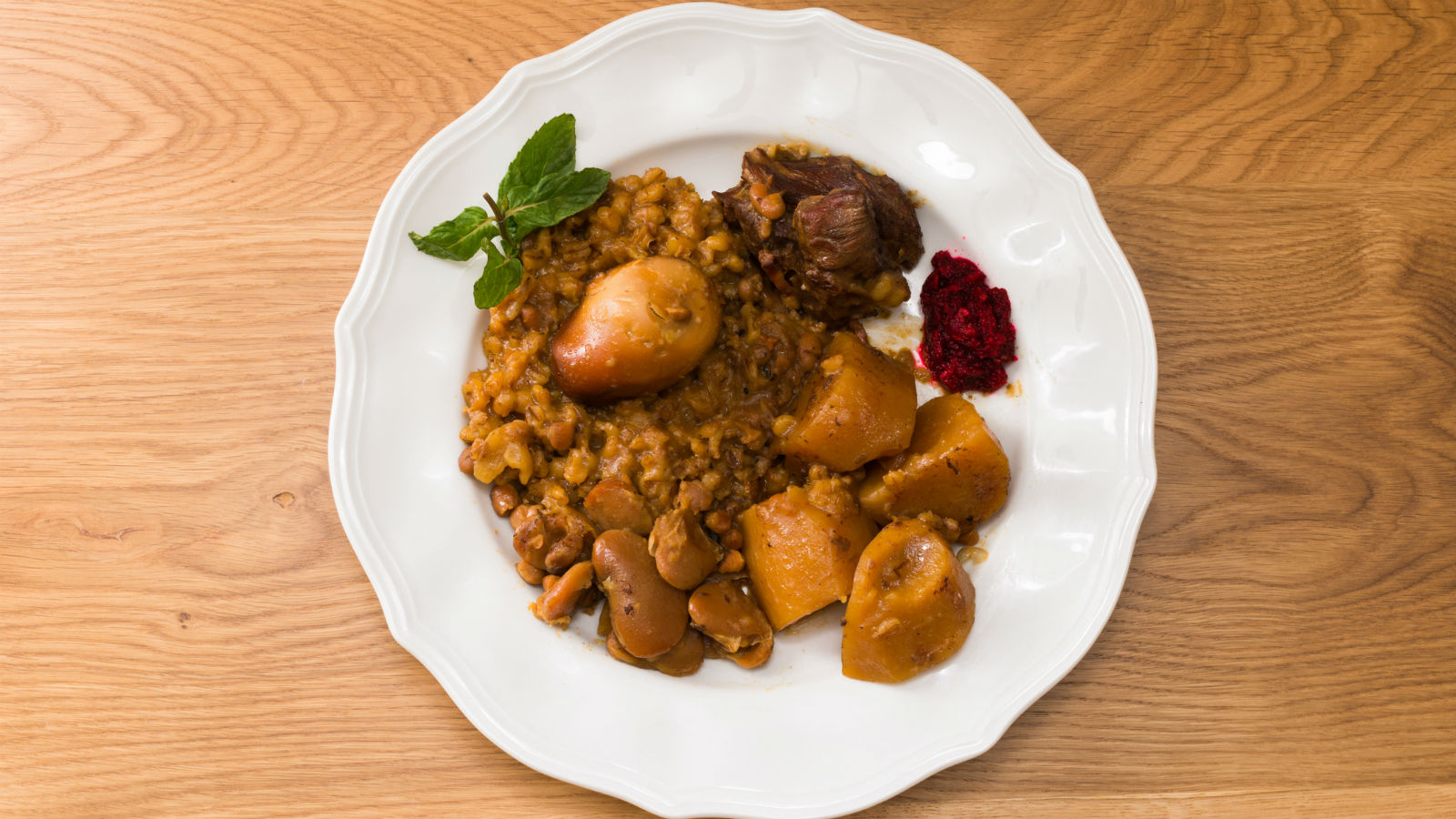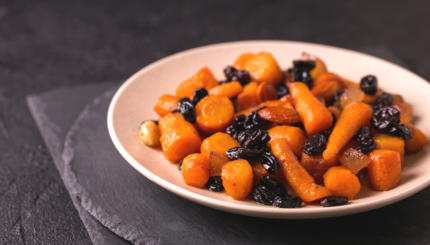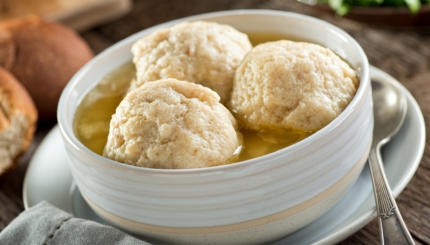The traditional stew for the Sabbath midday meal and [traditionally] the only hot dish of the day, which is prepared on Friday and left to cook overnight, is the most characteristic Jewish dish.
Scroll down for our favorite recipes!
In an ironic parody on Schiller’s “Hymn to Joy” entitled “Princess Sabbath” (1850), about assimilated Jews in 19th‑century Germany who frequented the Berlin salons while holding on to their Jewishness, the German poet Heinrich Heine rhapsodized about cholent, which “alone unites them still in their old covenant.”
Cholent has deep emotional significance. The smell exhaled when the lid is lifted is the one that filled the wooden houses in the (Jewish village in Eastern Europe). In the old days in Central and Eastern Europe, the pot was hermetically sealed with a flour‑and‑water paste and taken to the baker’s oven, and the men and children fetched it on their way home from the synagogue. Jewish bakeries in the East End of London continued the tradition, and on Saturdays their ovens were full of copper pots brought over from Russia and Poland. They would give metal tags with numbers for people to retrieve the pots and used a paddle to pull them out.

Help us keep Jewish knowledge accessible to millions of people around the world.
Your donation to My Jewish Learning fuels endless journeys of Jewish discovery. With your help, My Jewish Learning can continue to provide nonstop opportunities for learning, connection and growth.
Cholent is currently enjoying a renaissance. In my area in London, people buy it ready‑cooked, chilled or frozen, in foil containers. In Israel, young people, including Sephardic Jews, now flock to fashionable eateries that advertise “Jewish Cooking” to eat it on the weekend. In New York, a restaurant advertises, “The French have cassoulet, we have cholent.” (Cassoulet combines different meats, including goose and sausage, with beans slowly cooked in plenty of goose fat.) The likeness is not pure coincidence.
The name “cholent” (there are various pronunciations) is generally believed to come from the medieval French chault (hot) and lent (slow) in reference to the long slow cooking. There were Jews in the region of the Languedoc, where cassoulet originated, since earliest times. Many lived off the land. Toulouse, Narbonne, Nîmes, Lunel, Béziers, and especially Montpellier were centers of Talmudic studies. Then there was a massacre during the Albigensian Crusade in the 13th century and measures were taken against them.
When they were finally expelled in 1394, many headed for Germany. That may well be how a kind of cholent (there were no white beans at that time as they came from the New World) and the name were introduced to the Yiddish-speaking world. The German rabbis were stricter than the French rabbis, who allowed their servants to rekindle the Sabbath fire and reheat the pots. And in Germany the rabbis decreed that the public ovens be sealed with clay on Friday. In medieval Germany the dish took on the various additions that we know today.
The tradition of cooking a meal in a pot overnight is of course much older than the 14th century and has to do with the interdiction against lighting fires or cooking on the Sabbath. It was often referred to in Talmudic days and dates back to the ancient Hebrews. It is only the combination of ingredients that can be traced back to southwestern France and medieval Germany.
There are many versions now, including meatballs, tongue, sausages, meat loaf, chicken or lamb, and a variety of beans. In the old days families who could not afford meat had cholent composed only of beans and grain. Nowadays it is vegetarians who make meatless cholent.
The basic traditional cholent is meat, potatoes, barley, and beans. The traditional accompaniments, which are cooked in the same pot, are of German origin. They include (a sausage filled with a flour‑and‑onion stuffing) and various knaidlach–all part of the dumpling family of foods. There is good reason for the saying that cholent is so heavy with stodge that “people have to go to the synagogue on Sunday to pray for their stomach to recover.”
A test of “who is a Jew” is supposed to be whether you like cholent. One of my Israeli friends found himself eating cholent with friends in Jerusalem. When he complained that it was not very good, one of his companions replied, “It’s not supposed to be.” Of course, it depends on the cook.
Cholent Recipes
Reprinted with permission from The Book of Jewish Food: An Odyssey from Samarkand to New York, published by Knopf.
Sign up for My Jewish Learning’s RECHARGE, a weekly email with a collection of Shabbat readings and more to enhance your day of rest experience.




